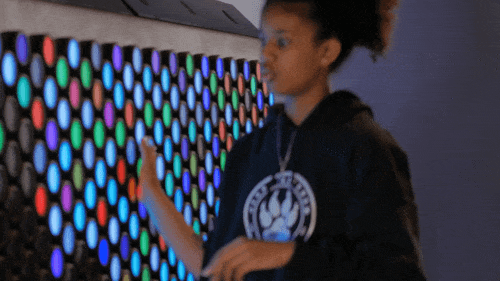
Unlike cognition, creativity is an infinitely expandable resource. The more creativity is practiced, the more creativity can be produced. Put another way, if you want to be more creative, practice more creativity.
Research on human behavior and psychology allows us to conclude that when you design for creativity, you are also able to solve a host of other recognized problems (such as overstimulation and disengagement), while serving the larger mission of the organization to produce measurable outcomes (such as greater engagement, performance, and learning retention). The most potent practice of creativity engages multiple senses simultaneously— particularly the senses of touch and vision.
How creativity happens in the brain
Creativity is surprisingly methodical, following a predictable, repeatable series of steps in the brain. Three systems work together to create something wholly new. An interpreter generates images, actors develop mental coherence, and a comparator helps test the validity of ideas. [9] This thought development spiral is as necessary to scientists as it is to artists.
1. Generate images.
The brain’s interpreter generates images—inventing stories, myths, and concepts to explain experience. These concepts may be fanciful (like stories) or descriptive (like research analysis and scientific theory). People who image well see new connections between existing elements. The mind sketches the images it is holding before making a final drawing.
2. Perceive, make meaning, and respond.
Actors develop mental coherence through the following process:
1. Sense & perceive.
A sensor gathers input through sight, touch, hearing, etc.
2. Make meaning.
The mind organizes these sensations and makes meaning of them. As the brain explains sensory input to itself, the actor turns into a perceptor, “identifying with increasing clarity the environmental stimulus to which the senses have reacted. At first, identification is fuzzy and questioning, but eventually there is recognition.
3. Respond.
The actor transforms into a motor responder, “instructing the body to act on its environment in response to the sensory and perceptual interpretation it has developed. Motor responses link feelings and executive function in the brain, creating ‘emotional actions’ and meaning.
4. Test and evaluate.
John Zeisel writes: “This is the form of creativity that orchestra conductors, theatrical directors and literary editors practice. … This step parallels the test phase in research and design, and is carried out in the brain’s comparator, which helps you determine how valid your images are, given your experience, so your brain can modify and improve the interpretation. … After the comparator modifies the holistic concept the interpreter has generated, a re-entry is made in the interpreter, and a new cycle of refinement and further interpretation begins.”
